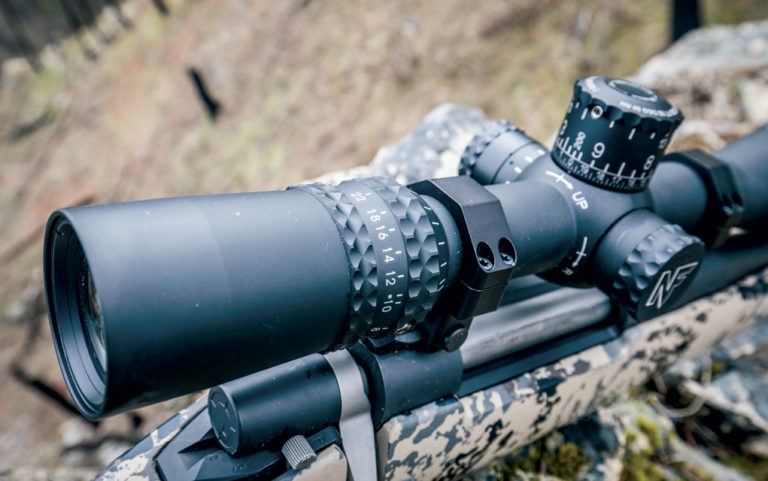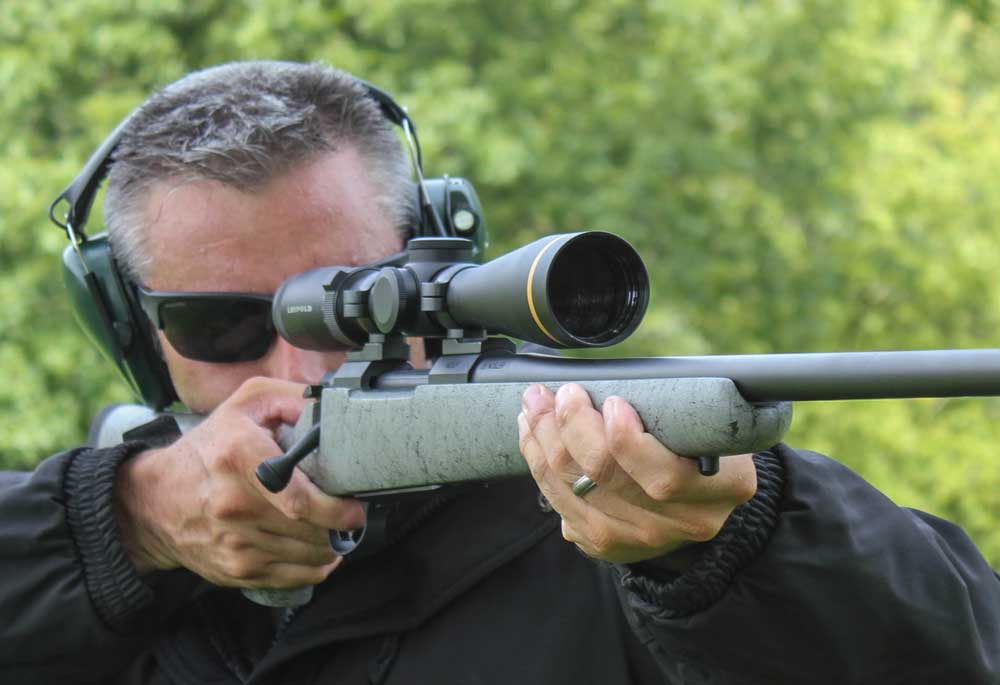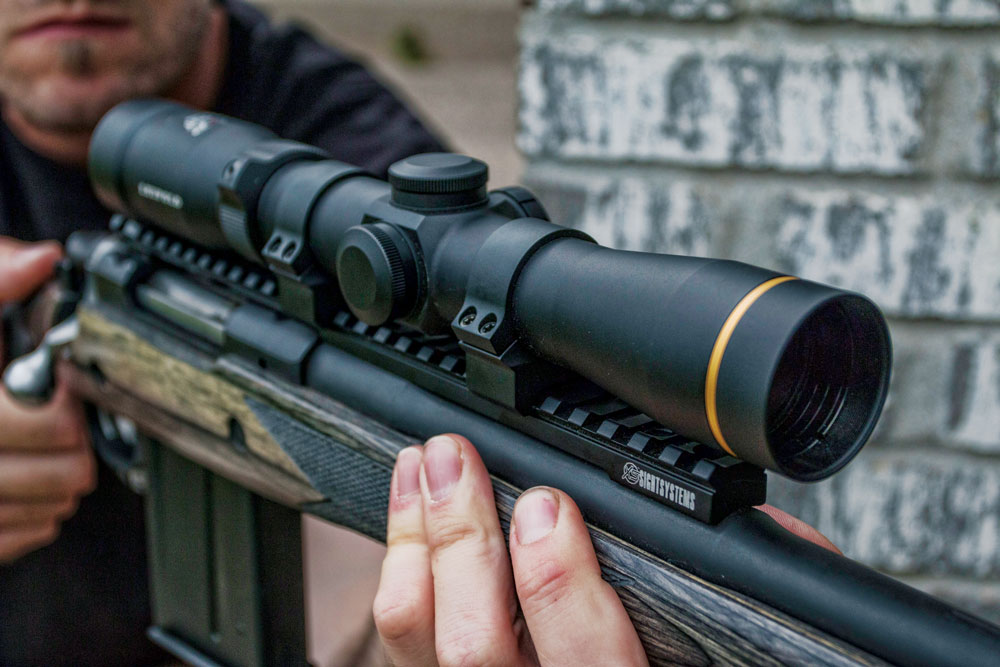
Choosing the right riflescope can be challenging. One of the first decisions you must make is deciding between a first or second focal plane scope.
What are the fine points of focal plane selection?
If you’ve been shopping for a new scope, you’ve likely been bombarded with terms and features that you never knew existed — or at the very least, you’re not sure which options are right for you. Don’t fret: While gun-mounted optics have gotten very good the past few years to keep pace with the precision rifle trend, the terminology has certainly gotten a bit out of hand.

One of the more common options available that causes some confusion for shooters is determining which focal plane scope you should get — either first focal plane (FFP) or second focal plane (SFP).
What Is The Focal Plane?
If the scope you’re looking at has an adjustable magnification, then the scope’s reticle appears either in the first or second focal plane. This will make a difference in how the reticle appears with different image sizes as the magnification changes. It’ll also affect the overall construction and cost of the rifle scope.
Second Focal Plane
Let’s start with the second focal plane classification first — after all, it’s the most common option, and it has been around the longest. Yes, second was first.
A second focal plane scope’s magnification adjustment changes only the size of the target’s image inside your scope. Put another way, the reticle stays the same size throughout the magnification range.
If the scope’s features don’t list which type of scope you’re looking at, then it’s very likely a second focal plane scope, as these are the most common. This is how most scopes adjust — especially consumer-grade hunting scopes.
This is a very popular option these days for two main reasons:
First, the scope is easier, and therefore cheaper, to make. With the reticle’s image staying the same size, there are fewer moving pieces inside of the scope. This not only makes it easier because there are fewer parts to worry about, it’s also easier to make the riflescope more consistent and robust.
Second, the reticle can be finer/thinner at high magnification. A finer/thinner reticle is preferred (as long as it’s thick enough to be seen, obviously) because it doesn’t obscure the target and it can allow for a more precise aiming point.
A fine/thin reticle at a high magnification setting might be too small to see if it also adjusted smaller with the target’s image. This kind of scope's reticles are simple: What you see is what you get — regardless of the magnification setting — because it stays the same size/thickness throughout the magnification range.

All that said, this feature is also a drawback with certain reticle designs.
If you’re using a simple crosshair or duplex-style reticle, a second focal plane riflescope is preferred. However, if you have a reticle with markings that correspond to certain measurements or adjustments at certain distances (holdover or windage hashes), you might want the reticle to adjust in size along with the target so that the markings are accurate at any magnification setting you use.
You can still use this type of scope with a reticle with markings; however, you must be very careful to ensure that you are only using the markings on the “correct” magnification setting to maintain their calibration.
On most second focal plane scopes with graduated reticles, the markings only equate to certain measurements at the scope’s highest power. After all, that’s the power setting that you’ll likely be using when trying to measure a target or when using “holds” for a long shot.
However, you must read your scope’s manual. Some second focal plane scope’s markings are set to a specific power that isn’t the highest available and is instead marked with a dot (or other marking) on the scope’s adjustment ring.
Also, some manufacturers do the math for you and will let you know what the markings on the reticle equate to at lower settings. Here’s a hint: The smaller the image is in relation to the static reticle, the larger amount each marking will cover.
First Focal Plane
First focal plane scopes are becoming more popular all the time, especially with advanced reticles that have multiple markings for measurement and adjustment.
A first focal plane scope adjusts both the reticle and the target image together with changes in magnification.
It’s a safe bet to assume that this style of scope will be more expensive than its second focal plane counterpart. This is because greater tolerances and care are needed to make the first focal plane riflescope function properly.
There is simply no need to have this kind of scope unless your reticle has markings that should correspond to a certain size at a certain distance. And, even if you do have a marked reticle, a first focal plane scope isn’t necessary, although it sure can be handy.

Regardless of the magnification setting, a 1-mil mark (for example) will always be 1 mil on the target. This is a nice feature because I’m a fan of shooting at lower magnification (try it sometime and watch your groups get better). Lower magnification can not only help with better shooting, it can also allow you to see more of what’s going on downrange and make shots at moving targets easier. I’ve also seen shooters forget what magnification setting they’re on and miss an otherwise easy shot because they held too far for elevation or windage.
In addition to cost, another potential issue with first focal plane scopes is the thickness of the reticle lines. If they are thin enough to not obscure the target at high magnification, then they can be too thin to clearly see at low magnification. Typically, first focal plane scopes have reticles that are slightly thicker than most shooters would prefer at high power, and conversely, the reticle can be nearly impossible to see at lower power.
Which Is Right For You?
If you’re looking to save money and/or don’t want a reticle with measurement/reference marks (e.g. mil-dot reticles), then you should go with the more common second focal plane riflescope.
However, if you’d like to use marks on a reticle to measure the size of a target when estimating distance or “holding” for elevation and windage, then you might want to consider a first focal plane scope.
If budget is an issue, please consider getting the highest-quality second focal plane scope you can afford, and spend your time mastering shooting your rifle. You’ll be better off doing that than getting a “lesser” scope just to get a first focal plane and skipping spending money on training and practice ammunition.
This is not to say that a first focal plane scope is necessary with reticles with measurement marks. Even if you have a mil-dot reticle, for example, a second focal plane scope might still be right for many people.
If you adjust the magnification down on a second focal plane scope, you simply must remember that the marks will no longer equal the predetermined measurements and instead will be much larger relative to the target.
Editor's Note: This article originally appeared in the January 2018 issue of Gun Digest the Magazine.

Next Step: Get your FREE Printable Target Pack
Enhance your shooting precision with our 62 MOA Targets, perfect for rifles and handguns. Crafted in collaboration with Storm Tactical for accuracy and versatility.
Subscribe to the Gun Digest email newsletter and get your downloadable target pack sent straight to your inbox. Stay updated with the latest firearms info in the industry.

![Best Concealed Carry Guns In 2025 [Field Tested] Wilson Combat EDC X9S 1](https://gundigest.com/wp-content/uploads/Wilson-Combat-EDC-X9S-1-324x160.jpg)


![Best 9mm Carbine: Affordable PCCs [Tested] Ruger Carbine Shooting](https://gundigest.com/wp-content/uploads/Ruger-Carbine-Shooting-100x70.jpg)
![Best AR-15: Top Options Available Today [Field Tested] Harrington and Richardson PSA XM177E2 feature](https://gundigest.com/wp-content/uploads/Harrington-and-Richardson-PSA-XM177E2-feature-100x70.jpg)
